Archive for ‘College’ Category
Unpacking: Paper Doll Explores a Video Game About Organizing
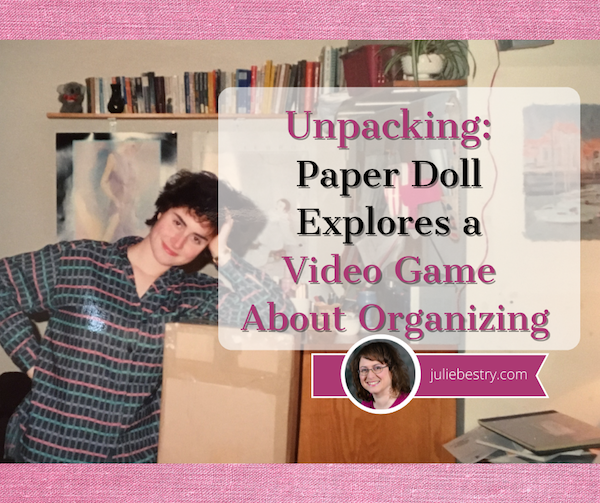
[Editor’s Note: This is not a typical Paper Doll post, but it is about organizing, so don’t worry that I’ve changed the focus of the blog. Also, if you click on any of the links in the first few paragraphs and get distracted playing classic games in your browser, don’t forget to come back and read the rest of the post!]
UNPACKING

I have limited experience with video games. Which is to say, I played the tennis-like Pong at a friend’s house when it first came out around 1972 and delighted in PacMan (and Ms. Pacman) while waiting for my Pizza Hut meal to be served, during my adolescent years.
And I even plunked myself down to play Super Mario Bros. when I was in graduate school and needed something obsessive and concentration-focusing to take my mind off what the heck I was going to do with my life when graduate school was over.
But game strategy, manual dexterity, competitiveness, and the ability to bonk a cartoon plumber’s head upward onto a brick to make a mushroom appear (if I’m recalling correctly) — none of these have ever been my strong suits.
In the past three decades, my interaction with video games has been limited to helping my clients pare down their video game collections, organize what they keep, and sell or donate the remainder. I haven’t played, or had any desire to play, any games until last week, when Australian game developer Witch Beam released Unpacking. My Google News feed knows me too well, and upon last week’s release, I was inundated with articles and reviews about this intriguing game.
The company describes Unpacking as a “Zen puzzle about unpacking a life.”
The game has eight chapters or levels, each corresponding to a move to a new “home” — a childhood room, a college dorm, one’s own apartment, sharing a space with a significant other, etc. — all for an unnamed, unknown protagonist. It starts in 1997 and continues forward to today. As players, we are never explicitly told the story of this character, but through her possessions, a certain intimate bond is formed.
The game has been described as “part item Tetris, part home decoration.” You select digital cardboard boxes, open them, and through the game, put the items away. There are pre-ordained slots or shelves; the game is designed as a puzzle, and the goal isn’t to throw everything higgledy-piggledy but find the logical home.
To move to the next level, you need to generally put things where a reasonable person might think they should go. That said, as part of the accessibility features of the game, you can apply the “allow items anywhere” option to eliminate the puzzle element. With this choice, you can’t really put an item in the “wrong” place any more than you could in your own home. (Still, please don’t store extra pantry items or clothes in the bathtub; we professional organizers have seen that in the real world, and it’s just not a great option.)
So, just like at your house, you can put things in weird places. And while I haven’t seen a treadmill or Peleton in the game, I’m betting that just like in real life, you can hang your clothes on exercise equipment. As a player, you get to decide where things belong, but you have to obey the laws of physics and geometry. You can’t fit square pegs in round holes or ten pounds of whatever into a five-pound bag.
I find it appealing that there’s no competition and no timers counting down. But there are, apparently, 14,000 different audio sounds to go along with tucking items in nooks and crannies, setting a toothbrush in a water glass, arranging books on shelves and supplies in drawers, and so on. If you lift a T-shirt to a hanger placed on a rod, the shirt hangs; move it lower to a stack of shirts, and it self-folds. (If only actual unpacking, organizing, and indeed, laundry day, were so magical.)
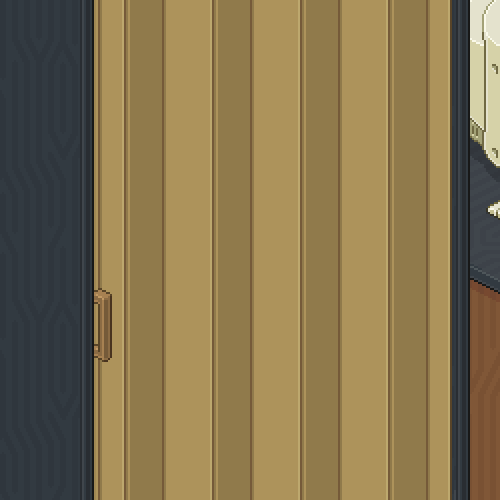
In addition to putting things away (that is, giving them homes), you can change the color signature of the room, add some on-screen stickers to decorate, take photos of a completed room, and add those photos to a scrapbook, complete with a “handwritten” description of your move-in experience.
Here’s a peek at the game’s launch trailer:
Throughout it all, there’s a soundtrack from a BAFTA (British Academy of Film and Television Arts) award-winning composer, Jeff van Dyck. If video game soundtracks are your thing (Yes, I’m looking at you, my friend Chris!), you can listen to Unpacking’s soundtrack on Spotify and purchase it in all the usual music-buying places like Amazon, Apple Music, Bandcamp, etc. (And no, Chris, I’m not listening to this in the car on any road trips.)
Warning: I should also note that, assuming you’re reading in North America, there will be some oddities in the rooms and homes in Unpacking. The refrigerators are not the full-sized ones we have, but those smaller, under-counter ones that are barely bigger than dorm fridges. The bathtubs have the glass half-walls I saw in Europe; I’ve yet to figure out how one manages not to soak the half the bathroom, but at least there’s no need to run any water in the actual game.
I’ve seen reviews calling the game calming and endearing, but also cathartic and moving. (Of which, I have more thoughts, below.) As a professional organizer, of course, I found this tweet hopeful:
Y’all, I already knew @UnpackingALife is a great game, but my daughter is cleaning her room and I was impressed with how much better it looks than normal.
She told me “Unpacking really helped.” Holy crap ? Best game ever!!!! pic.twitter.com/WQNhT3fHd7
— Dr. Ashley Godbold ????? (@ashleygodbold) November 6, 2021
And for those who wonder how much detail is available to organize exactly how and where you want things to be, this tweet gives you a sign:
We definitely didn’t expect this kind of creativity from our replay feature, but we love it so much! ??
Credits: @carellogyhttps://t.co/wZe1SQpICc pic.twitter.com/115WshTfLj
— Unpacking ? Out NOW! (@UnpackingALife) November 7, 2021
Unpacking is available for a variety of platforms, including Windows, Mac, Linux, Nintendo Switch, and Xbox One and runs $19.99.
ACCESSIBILITY
In the real world, unpacking and organizing a new home, whether a dorm room, a studio apartment, or a multi-bedroom family house, can be a massive headache. Imagine how much more difficult is must be for those with physical disabilities or distracting cognitive challenges (ranging from ADHD to traumatic brain injury). This is just one reason why many clients call in NAPO or NASMM professional organizers who specialize in relocations to work some video game-like magic in setting up a new space.
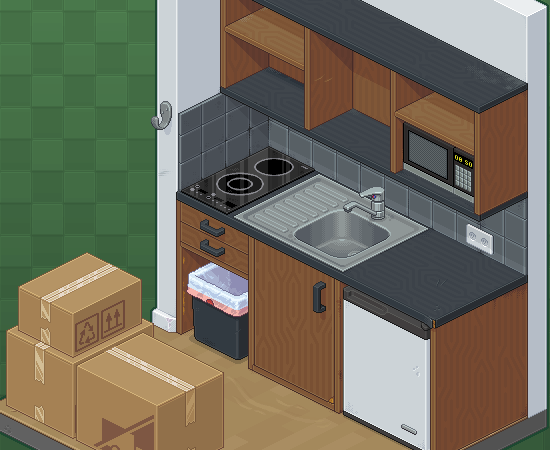
I can’t be the only person who gets flashbacks to Bewitched watching this sped-up kitchen unpacking/organizing scene play out. Seriously, compare it to Samantha Stevens working her tinka-tinka-tink:
There are no in-game professional organizers, but Unpacking‘s developers prides themselves on its accessibility features.
For those needing visual assistance, the user interface buttons can be enlarged, and you can zoom in on the screen; if you’ve made a booboo, the red “invalid” outline (remember what I said about the laws of physics?) can be changed to a different color. And you can disable the animation feature for room-swapping (in case you unpack a box of kitchen items when you’re in the living room) to avoid motion sickness.
In terms of audio assistance, the game lets you operate soundtrack music and sound effect volumes separately, and there are no audio-exclusive cues for game play, so players who can’t hear don’t miss any of the essential game features.
For cognitive accessibility, the game has no penalties; there’s minimal text, and reading skills (in English or otherwise) are not required in order to play. And, as mentioned, you can turn off the puzzle angle to be allowed to put things anywhere.
There are also a variety of mobility-related accessibility features. None of the actions require pressing more than one button at a time, clicking-and-dragging, holding down buttons. Computer versions support playing via a mouse and keyboard, a game pad, or touch (“on supported hardware,” they note) and you can play one-handed with just a mouse. The Nintendo Switch version of the game supports (and I quote, because I have no idea what this means), “gamepad, touch, and gyro in two-handed and one-handed configurations.” Controls are re-mappable when necessary to support a user’s accessibility needs.
While Paper Doll is neither a gamer nor a reviewer, I think it’s important to accent accessibility features in products, and while this does not arise often when I talk about notebooks and storage options, I intend to be more cognizant of such issues in future posts.
UNPACKING THOUGHTS ABOUT UNPACKING
Having missed three decades of video game development, I am, at best, only peripherally aware that not all games are multi-player shoot-em-ups and car-racing (and crashing) extravaganzas. Certainly I knew about The Sims, a series of simulation games where players create virtual people, build them homes (and families) and play with their careers, activities, and moods and desires.
Apparently, this approach is called a sandbox game, an open-ended type of video game where players have a freedom of movement for their creations and there are no pre-set goals. (If only we humans felt that much ease in creating our lives and risking change!) The popular Minecraft, with it’s blocky 3D people and infinitely expanding world of raw materials, tools, and create-able structures is similar.
Unpacking feels like it belongs in a world tangential to these sandbox games; there’s freedom of movement, no timers or competition, and you can’t lose your character’s life by unpacking things in the wrong order or organizing things “wrong.” But like real life, there is a very solid goal for you as the in-world character: unpack in an organized way to live your life.
In Vice‘s Unpacking Is a Lovely Game About the Power of Seemingly Mundane Objects, Moises Taveras has created a great introduction to the game beyond the broad strokes. Through it I learned some spoilers and realized that there was more depth of insight to be had beyond how many frying pans could be fit into a cabinet:
The “challenge,” a term I’ll throw around incredibly loosely, becomes finding where everything fits best. It’s a logic puzzle, so as long as you’ve been in a kitchen, a bedroom or bathroom, you’ll be able to sufficiently reproduce a functional home. … There’s a joy in getting it all right, but the greater one to me was playing a game that, in bits and pieces, understood the relationship we build with the things we collect.
But there’s more. After I learned of Unpacking, I started reading every review I could find, and what’s particularly gripping about the game is how you get to see the protagonist’s life unfold through her possessions (and those with whom she shares her space). It reminded me of Sam Gosling‘s book, Snoop: What Your Stuff Says About You.
Vibrant and Vertical: Organizing Paper for Back-to-School
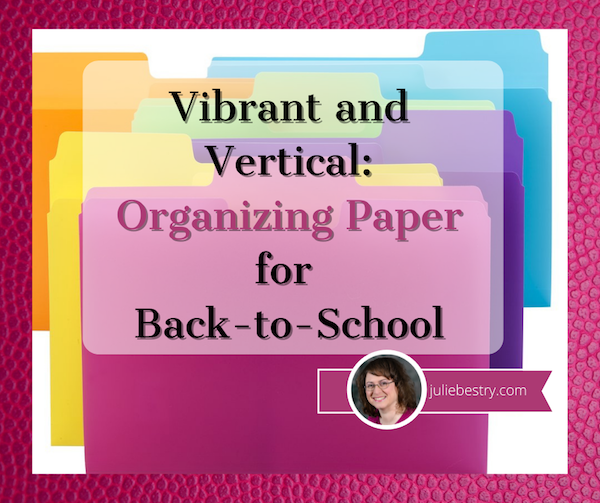 What time is it? (No, this isn’t a follow-up to my Does Anybody Really Know What Time It Is? 5 Strategies to Cope With Pandemic Time Dilation from May 2020, though that may be worth a visit — for all of us.)
What time is it? (No, this isn’t a follow-up to my Does Anybody Really Know What Time It Is? 5 Strategies to Cope With Pandemic Time Dilation from May 2020, though that may be worth a visit — for all of us.)
It’s Back-to-School Time! (If you said “Howdy Doody Time,” thanks for playing our Boomer Edition!)
THE ASPIRATIONAL PROMISE OF NEW SCHOOL SUPPLIES
After almost 18 months of weirdness and boondoggles, kerfuffles and plague-related malarkey, time has little meaning. But really and truly, it’s back-to-school time. And reminders are everywhere. Leaving aside the specific anxieties of returning to school in this (oh, man, I’m going to say it) unprecedented era, the new school year (whether you’re 5 and entering kindergarten or 55 and going back to finish a degree) holds both panic and potential. We may joke about it, but this tweet holds so much truth!
kids went shopping for school supplies and I am pleased to report the pure, uncut optimism of a new trapper keeper in a kid’s hands for the upcoming school year “is going to finally change EVERYTHING and keep me organized for once!” is still alive and well
— Matt Haughey (@mathowie) August 14, 2021
Yes, friends, Mead is still making those Trapper Keepers, the basis for so many our searches for perfect organizing systems in adulthood. Be honest, if you could find something that reflected your personality and offered the flexibility a three-ring binder, hole-punched two-pocket folders, a clipboard, and a Velcro closure, wouldn’t you carry it? Or drive it? Or marry it? (Just me?)
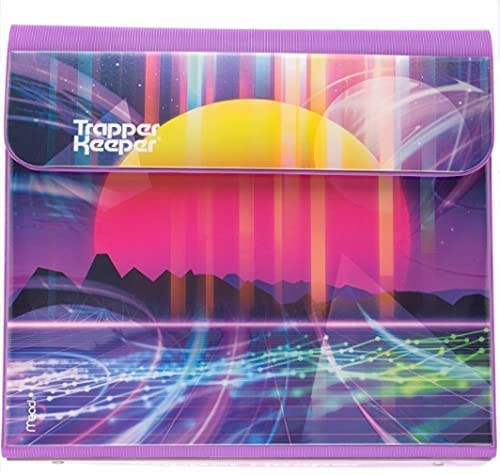
Personally, I always liked those back-to-school days, at least the ones in August, a full month before we Western New Yorkers went back. (Here in the Southeast, kids have been back at school a few weeks in 90° heat. Oy.) August was prime aspirational time. It was the back-to-school issue of Seventeen Magazine, with everything wool and plaid and new.
Our schools didn’t provide lists of what was required for class until the first day of school, but that didn’t mean I was willing to wait. I loved this time of year, and dragged Paper Mommy into the void — I mean, into the school sales. And I vehemently insisted on getting everything all-new every year, even these:
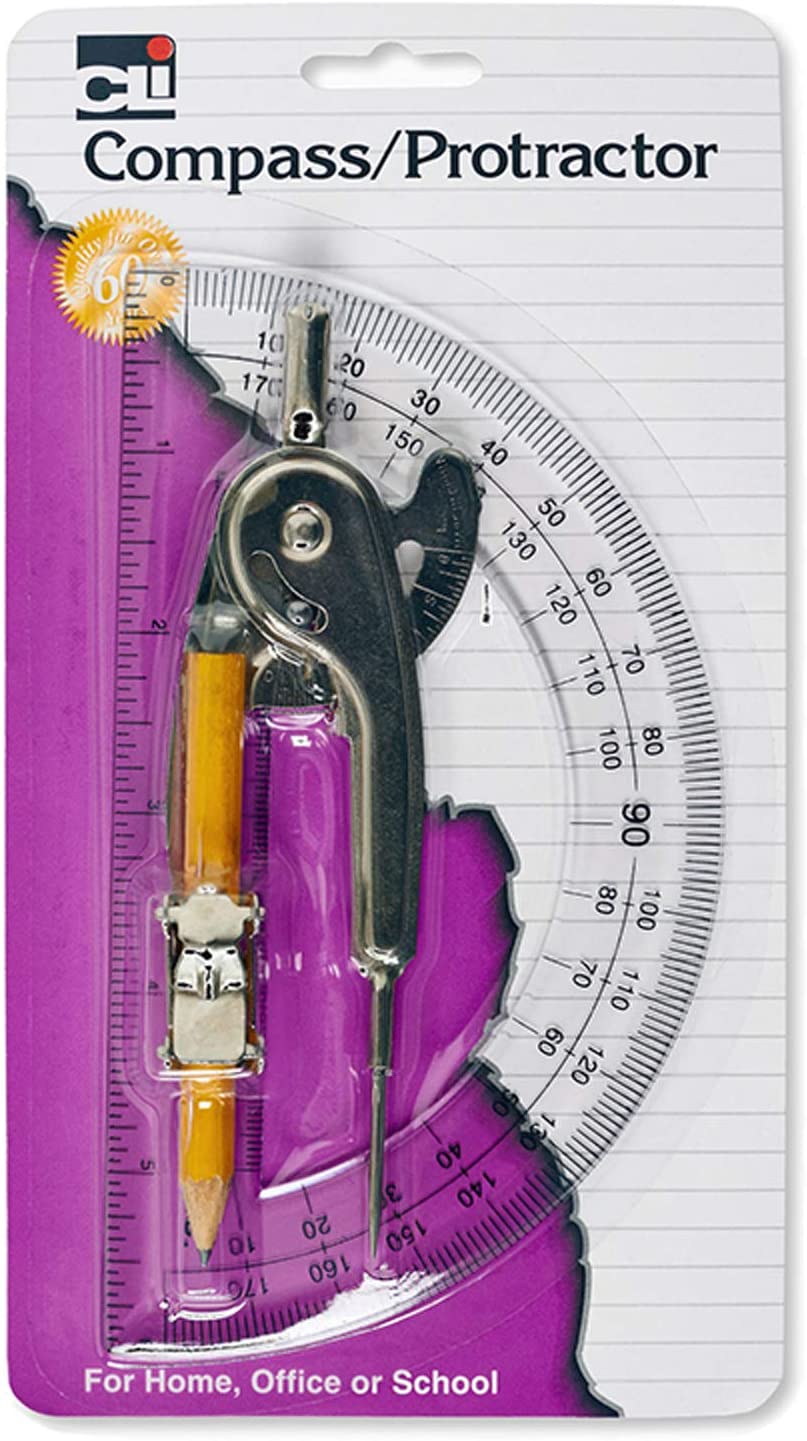
(You know you had them. You know that you probably have no recollection of how to bisect an angle and probably couldn’t figure out what to do with either the compass or the protractor right now, short of making a circle and then cringing when the point of the compass went skittering across the table, making that screechy noise.)
But anyway, do as I say, not as I did. Better yet, do as my colleague Amy Slenker posited in her excellent blog post, 7 Easy Ways to Get Organized for Back to School when she noted, “June scissors work in August, right?” Right!
Of course, as adults, we know that motivation can come in all shapes and sizes, and when the idea of sitting at our desks bring misery, a new set of never-before-used file folders and a snazzy new planner can ramp up our enthusiasm. Also right!
Somewhere in between buying all new everything (even though some things never left your cubby between September and June) and using the same-old, same-old, there’s a sweet spot. So today, we’re just going to look at a few things that might make back-to-school for students of all ages just a little more colorfully delightful.
OPT FOR WHAT’S VIBRANT AND VERTICAL
There’s lots of research showing that color can impact mood. Greens are calming, while reds are stimulating. Studies show that blue “encourages intellectual activity, reason, and logical thought.” Yellow is associated with happy moods, self-esteem and playfulness. While fashion designers may occasionally opt for greys and blacks to convey sophistication, unless your student is a goth (are there still goths?) adding a little vibrancy and color can open up some opportunities, motivationally-speaking.
Color grabs our attention, conveys meaning, and clarifies boundaries. It also just makes us happy. For example, what kind of feeling washes over you when you see this picture?
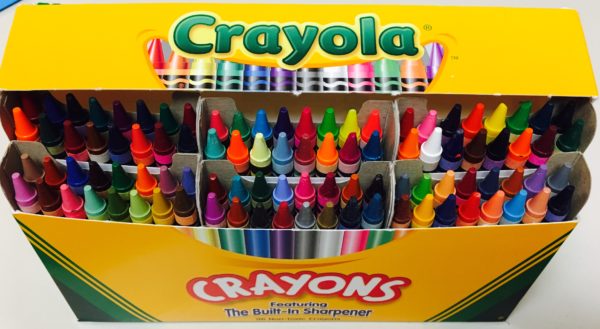
Optimism? Excitement for new beginnings? I took a new 64-box of Crayolas off to college with me in 1985, and I guarantee you I was not the only one!
In addition to the vibrancy of great colors, another boost for students, whether they’re in elementary school or grad school, is the advantage of the vertical hold. We’ve talked a LOT over the years about how vertical solutions aid in organizing, but the key is that when our resources stand attention, we pay attention to them and are less likely to let them get cluttered..
ORGANIZE PAPERS COLORFULLY
College students might appreciate something that keeps papers organized by class, fits squarely in a backpack, but can be displayed easily in a dorm room (their own, or their study-buddy’s) or an empty classroom.
For something both elegant and bright, the Smead Cascading Wall Organizer might be just the ticket.
A revamp of the the classic version, this colorful Gen 2 organizer can hang on the wall or anywhere from a nail, hook (you sent your kid to college with a variety pack of Command Hooks, right?) or even a hanger to reduce clutter on the desktop.
In durable, bright, and easy-to-clean polypropylene, the six colorful (yellow, orange, fuscia, green, blue, and purple) letter-size pockets can be removed to take to class, the library, or an extra-curricular meeting. (Each holds 50 sheets.)
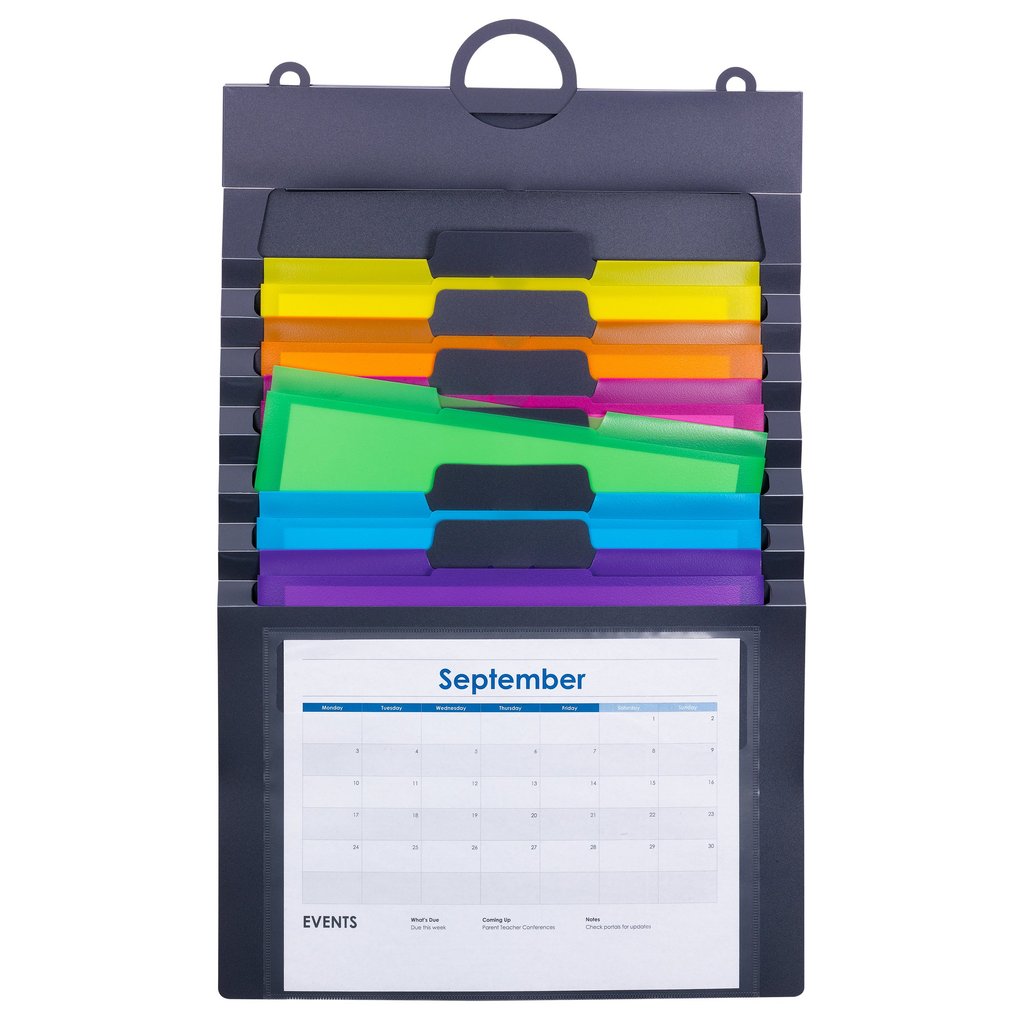
Use the clear front pocket to show the current month’s calendar, a project timeline, or a photo of far-flung friends. There’s a 3-part hanger (use one loop or all three), and an elastic cord closure for putting it all together and stowing it away.
The whole thing is PVC-free and acid-free, and measures 14 1/4″ wide by 24″ high (when fully expanded). Available directly from Smead for $17.99, or you can find it on Amazon for $11.29.
There are two variations on the theme if these brights are too vibrant for you or your student. There’s a pastel version of the Cascading Wall Organizer (well, it’s translucent, but the folders are pastel), also $17.99 at Smead or $13.78 at Amazon:
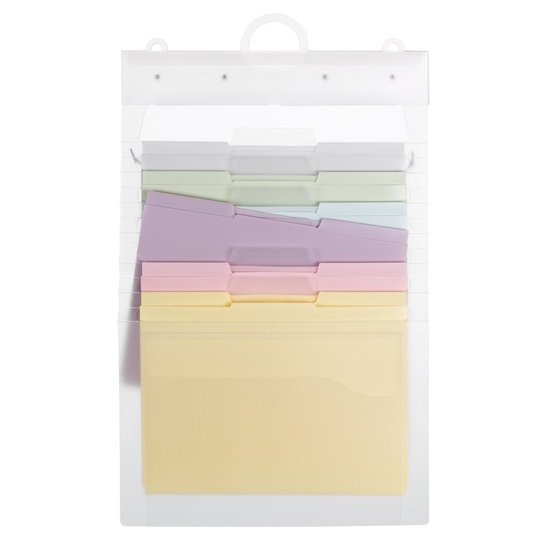 as well as one with jewel tones for $13.99 (which is Paper Doll’s personal favorite, in case you were wondering).
as well as one with jewel tones for $13.99 (which is Paper Doll’s personal favorite, in case you were wondering).
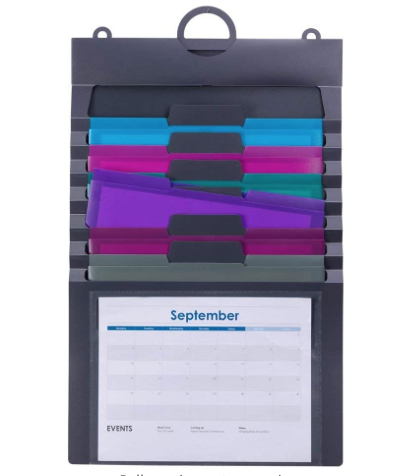
The Container Store has a similar product, its Multi-Color Cascading 6-Pocket Letter File Wall Organizer Tote.
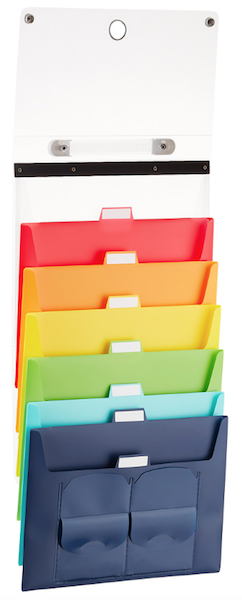
It measures 13 3/8″ wide by 10 1/2″ high, and when it’s not fully extended, it folds and collapses into a 1 1/2″ thick tote. Two snap closures open to reveal six cascading pockets (red, orange, yellow, green, teal, and dark blue) that hold letter-sized interior file folders (sold separately). You can label the tabbed pockets, and there’s both a handle for carrying the closed tote and a ring for hanging it for display.
If you like the idea of bright colors and poly folders but your older student already has a great desktop file system in place and doesn’t need to be mobile, consider Smead’s SuperTab® Poly File Folders. A box of 1/3-cut (left/middle/right) tabbed, letter-size poly folders come 18 per assorted pack, with three folders, each, in blue, green, orange, pink, purple, and yellow. The durable folders are acid-free and PVC-free for long lasting durability. (And nowadays, I’m a super-fan of poly, because you can wipe it down with a Clorox disinfecting wipe.)
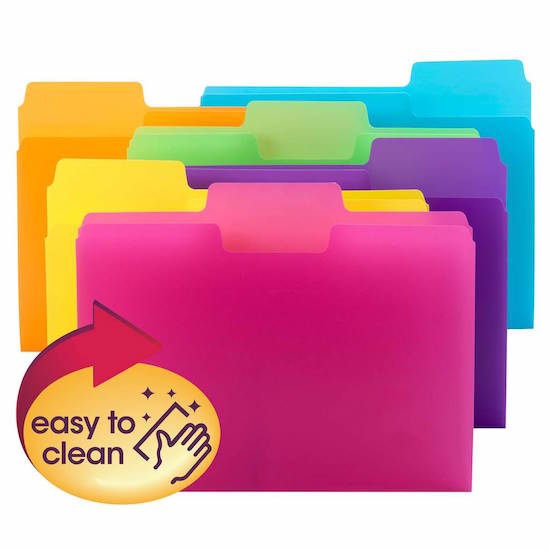
Oversize SuperTabs have a 90% larger labeling area than standard file folders, allowing you to use larger text, larger labels, or more lines of description. Although their tabs are larger than traditional file folders, they’ll nonetheless fit traditional vertical file drawers. These cheery Smead SuperTab® Poly File Folders run $17.06 at Smead or $16.44 at Amazon.
A WARNING ABOUT COLOR-CODING
I should note, I often warn against the potential problem of color-coding files. When a client invests in traditional boxes of assorted colored file folders (or boxes in multiple, different colors), I tend to worry about the Ralph Waldo Emerson’s quote, “Consistency is the hobgoblin of little minds.”
But wait, you might be thinking. Isn’t consistency the key to organizing?
When you color-code your folder system, it makes it easy to organize thematically. Green is biology (or family finances) and blue is literature (or insurance) and red is calculus (or medical records). But what happens when you need to make a new folder but run out of the color you need? For most people, this causes a breakdown in the system. Lacking the right folder, people often just stop filing!
But you see, Emerson’s entire quote is rarely given. It’s actually, “A foolish consistency is the hobgoblin of little minds, adored by little statesmen and philosophers and divines.”
But you are no fool! If lack of the right color is a problem for you or your student, just grab a different color folder and a Post-it! Note. Write a temporary label on the top, and stick it on the inside of the folder so that the label appears just about where a permanent label belongs. (Then go order a box of folders and get on with your day!)
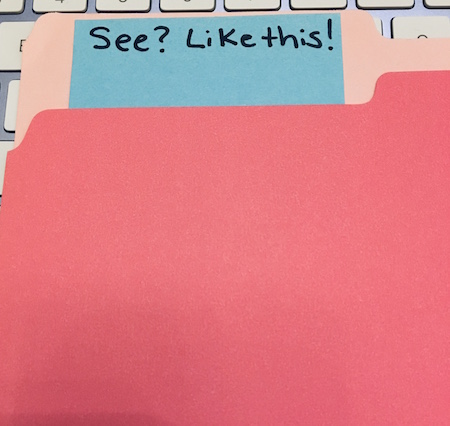
HOMESCHOOL CHEER
If your student is 8 rather than 18, and you’re still doing the home-schooling thing this year (either because you’d planned it or because everyone got sent home a few days into the school year), you might want a colorful, vertical solution for making your home-school “classroom” feeling a little more official.
I like to borrow this trick from teachers who are tight on space in their classrooms or don’t have a base of operations. Scholastic’s File Organizer Pocket Chart lets you create a bright, vertical HQ for your home-schooling student’s worksheets, problem sets, instruction sheets, and other handouts.
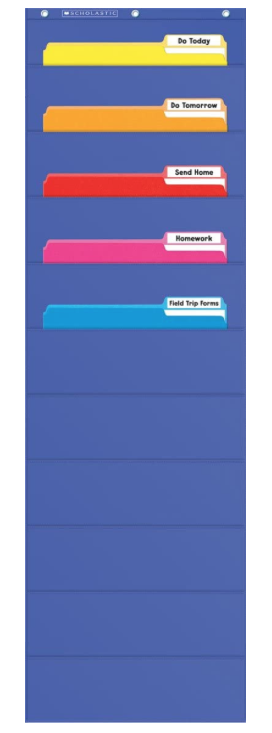
Just as teacher would do in the classroom, you can use the ten sturdy pockets to hold letter-size file folders. The pocket chart is lightweight but made of durable nylon, and measures 14″ wide by 46 1/2″ high. There are three reinforced grommets at the top for hanging the chart on the wall or the back of a door. The pocket chart runs $15 on Amazon.
ACCENTUATE THE POSITIVE WITH A POP OF COLOR
Colorful highlighting is a great way to make important points stand out. But have you or your student ever highlighted the wrong thing? It’s a bummer!
But did you know there are ERASABLE HIGHLIGHTERS? (I know! I can tell that you’re squealing, too!)
Crayola’s Take Note Erasable Highlighters let you highlight (or underline!) in six cheery colors (pink, orange, yellow, teal, blue, and purple). You can color-code your highlighting by class or use different colors for different types of information (yellow for the test, purple for a book report, etc.). And a set of six is only $5.99!
Paper Doll & Real Simple Organize Dorm Rooms: SUPER-EXTENDED Edition
Happy new school year!
I am very excited to have been interviewed again by Real Simple Magazine, this time about How To Make the Most of a Dorm Room, According to a Professional Organizer. (If you get the print copy, it’s page 52.)
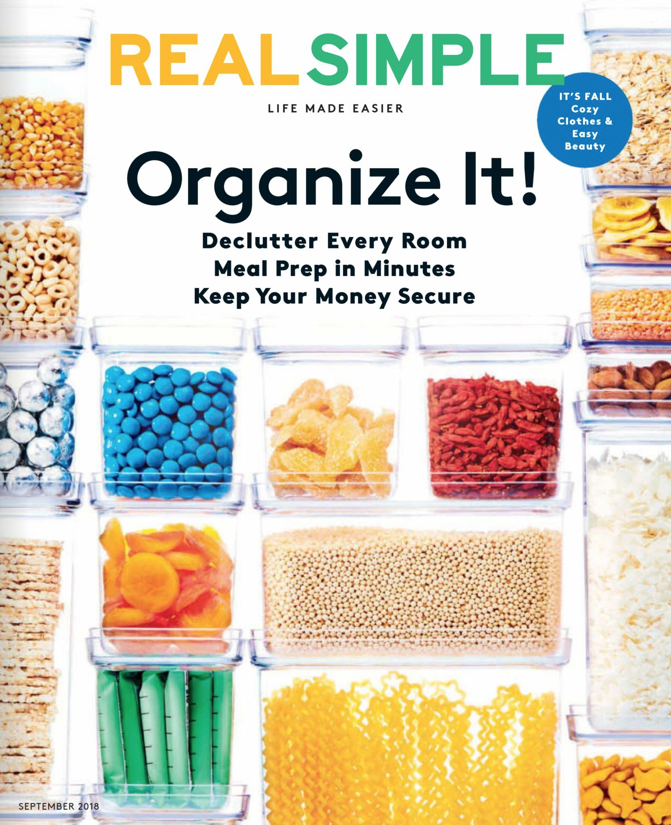
Longtime readers of the blog know that everything I need to say on any given topic can’t be contained on one page of a magazine, so I’d love to share the rest of my advice with you today.
Whether you are a student or you just dropped yours off at college last week, dorms (and other small living spaces) offer an opportunity to minimize without being altogether minimalistic, to be practical without giving up style. And be assured that it’s not too late, parents. Your college kids will be home for Fall Break or Thanksgiving, giving you the opportunity to surprise them with room improvement assistance.
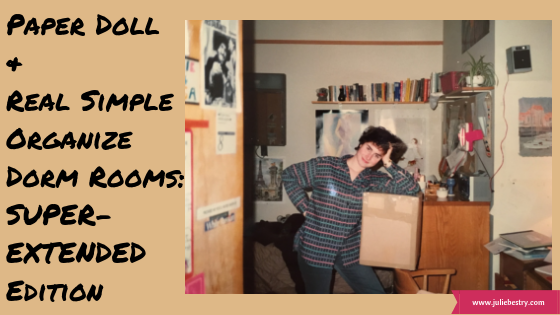
Thirty-three years (and a few days ago), Paper Doll was a college freshman, far above Cayuga’s waters. For most of my life, I had a bedroom and a bathroom to myself, and (long before my professional organizing days), an entire house as an extension of my “space” to keep my stuff. Having a roommate, and sharing a bathroom with five other young women, all in a space smaller than what I’d previously had to myself was an education!
A dorm room has to serve as a study lounge, sleeping area, kitchenette, exercise room, and more, but space is at a premium. Keep surfaces clear and the clutter at bay with these organizing essentials.
MAXIMIZE VERTICAL SPACE
Declutter doom room floors and desktops by maximizing underused vertical surfaces. You can create DIY organization with corkboards, available by the board, tile, or roll.
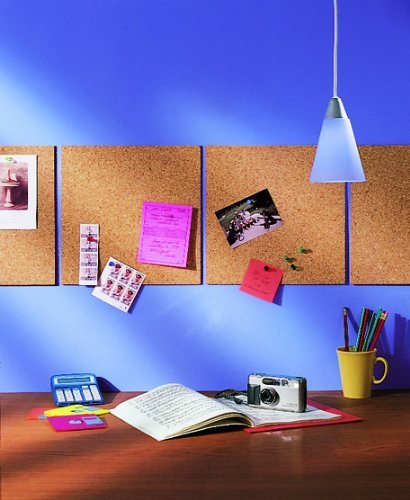
Pegboards are another do-it-yourself option, especially if you can’t use adhesive on your walls. Hang colorful pegboards from the ceiling, flush against the wall, and then add the hardware – hooks, baskets, and even small bulletin boards.
For students who want to upgrade (or who have no visual artistic talent, like Paper Doll), the attractive and sturdy Copper Wire Wall Grid uses repositionable hooks, shelves, and baskets. (Available in rose gold from the ContainerStore.com; $20 for the wall grid and $8-$12 for accessories.)
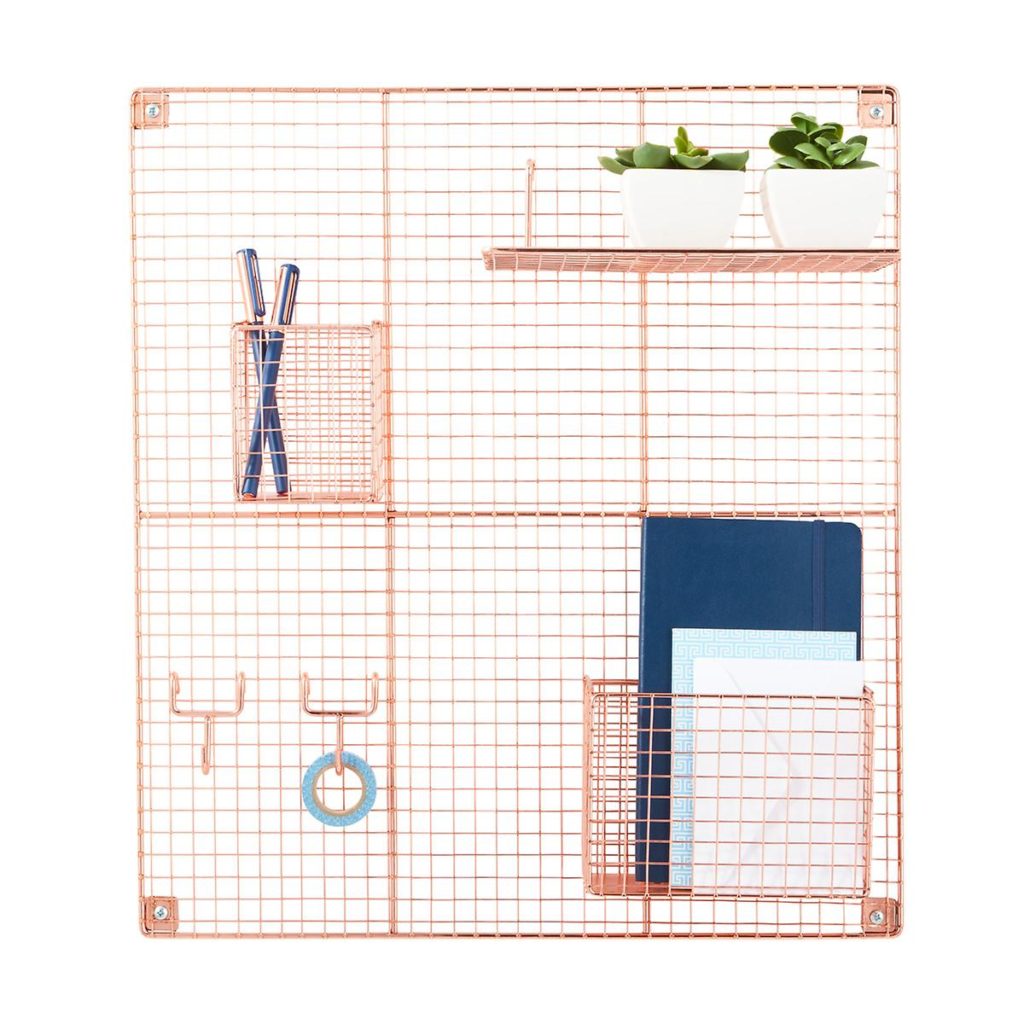
The same amazing 3M Command-brand hooks that help you keep track of keys and jackets at your house can do wonders in dorm rooms and bathrooms. Attach Command hooks, strips, and decorator clips to walls and doors to hang coats and clothing, hair dryers and jewelry, headphones, photos and tapestries without fear of damage to paint or finishes. (Command.com)
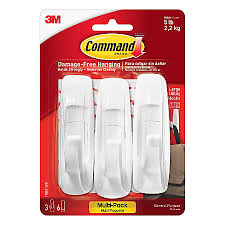
When you need more than desk space for your brilliant ideas, repositionable whiteboard sheets stick to the wall with static and let you write or draw. Snap a photo and send it to Evernote to preserve your brilliance, and then erase when it’s time to move to the next problem set. (White or clear from WizardWall.com or Amazon, from $42.)
REVEAL HIDDEN STORAGE
These sturdy bed risers with outlets and USB chargers let you reveal the possibilities of under-bed storage, from nylon duffel bags for corralling bedding and towels to storage tubs for off-season clothes. (Available at Bed, Bath & Beyond, Amazon, and most big box stores, usually around $30.) The risers come in a variety of styles, but none are what you’d call fashion-forward, so also consider a long bed-skirt if you want to keep your bed high and at the height of fashion.
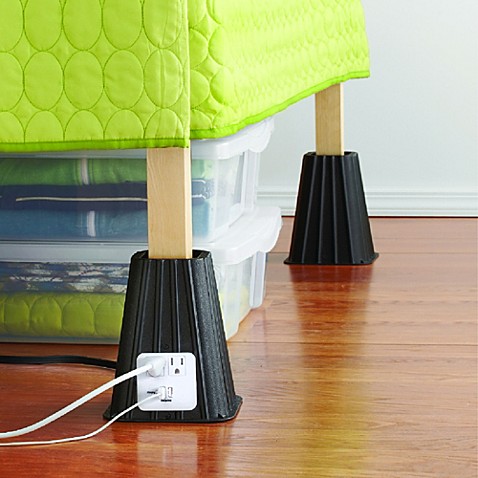
OVER-THE-DOOR ISN’T JUST FOR SHOES ANYMORE
Over-the-door shoe organizers keep your kicks (that’s apparently what they call sneakers these days!) from crowding a tiny dorm wardrobe’s floor, but the concept works for everything from hair care products to cleaning supplies to lingerie. (StockItPockets.com, $25)
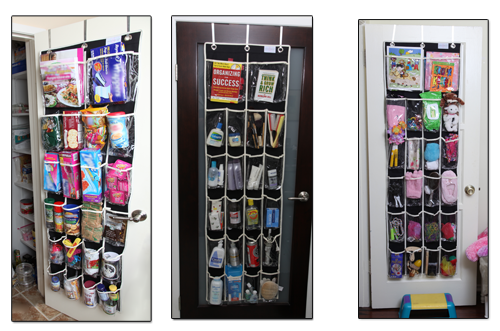
For those with suite-style bathrooms, swap your shower caddy for a hanging mesh shower pocket organizer to keep toiletries handy. (Amazon or CampingWorld.com, about $9-$11)
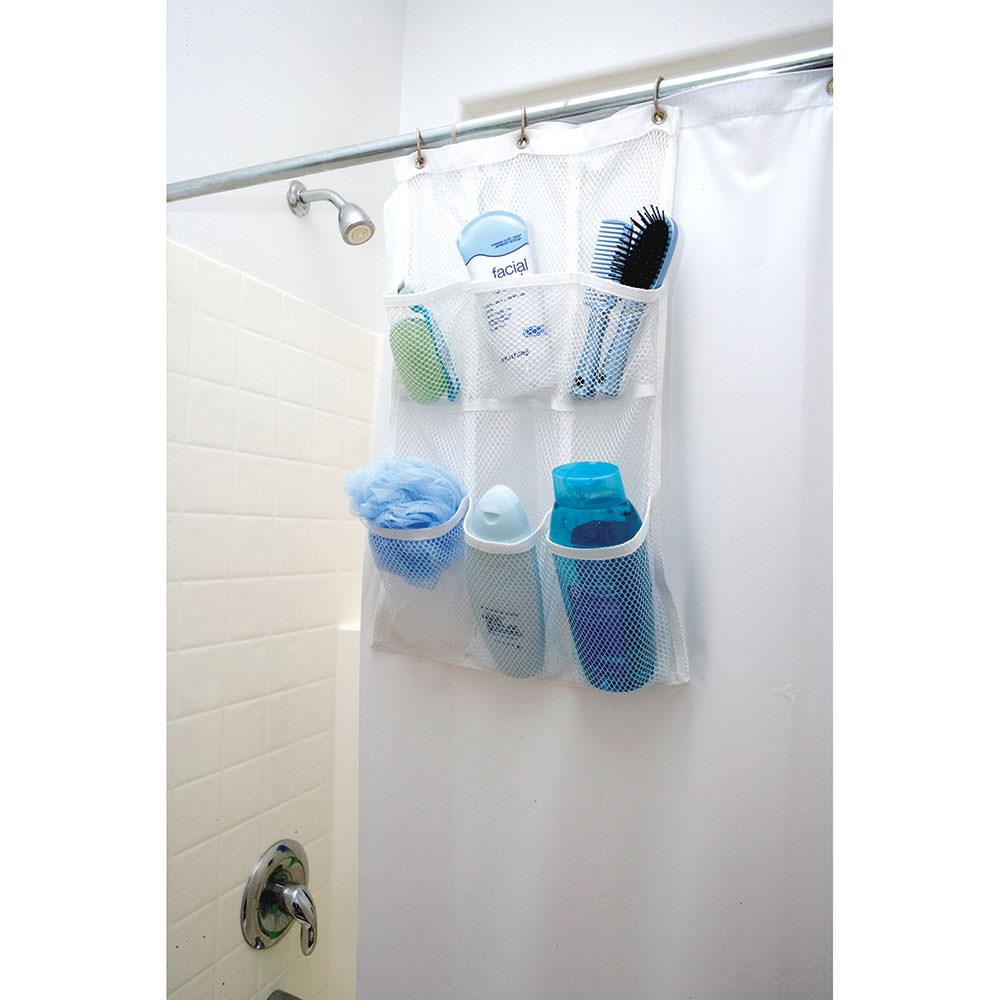
FOCUS ON PRIME REAL ESTATE
When there’s no room for a bedside table, keep everything you use (or should use) close at hand. Store your phone, tablet, glasses, tissues, highlighters, and spare notebooks in the unused space hugging your bed with any of a wide variety of bedside storage caddies (Bed Bath & Beyond, in-store only; Wayfair) or a Whitmor Bedskirt Organizer (Amazon), all around $20.
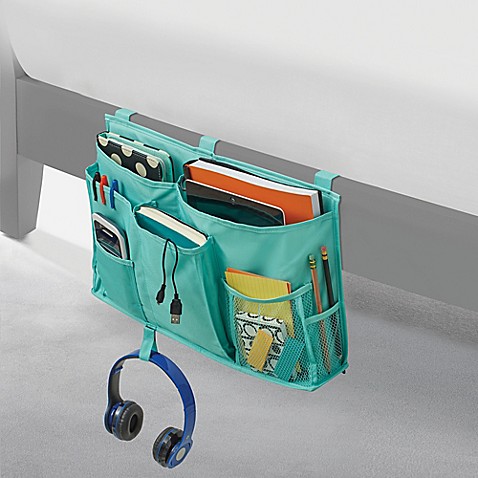
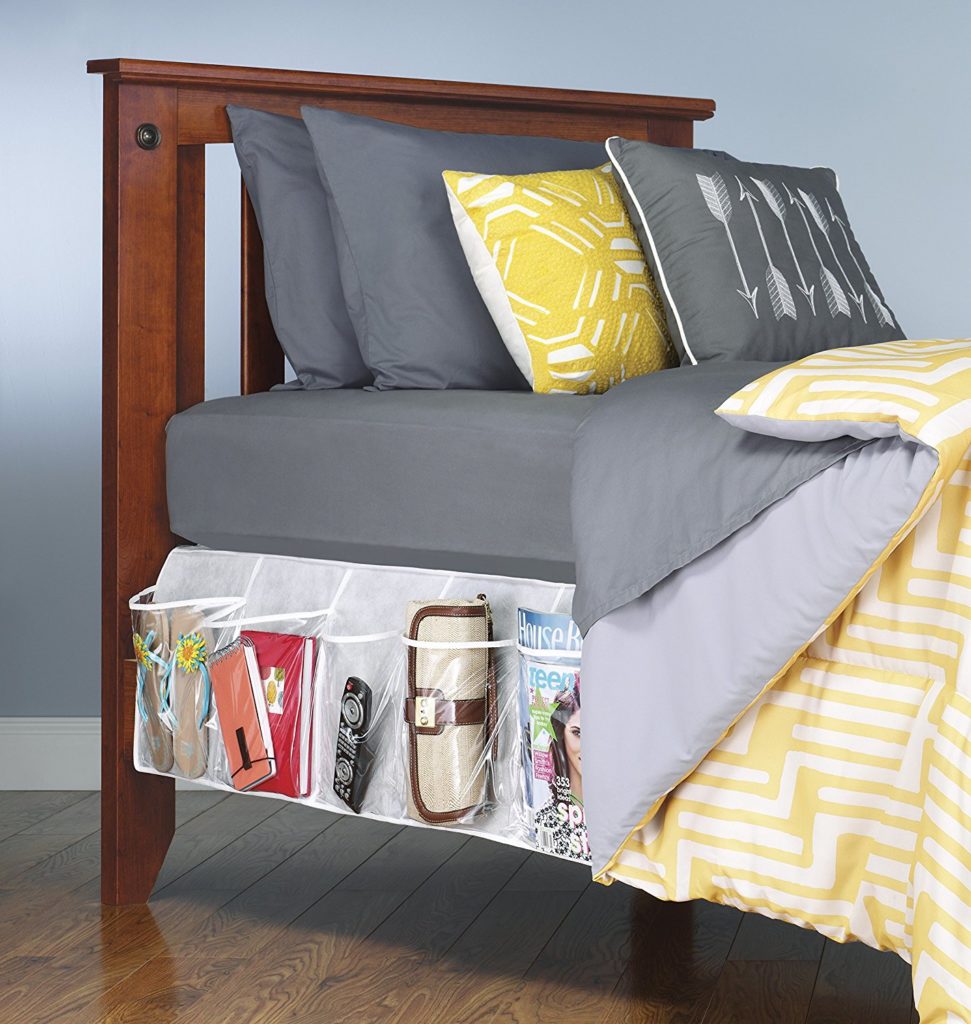
Don’t waste the space on the top of your mini-fridge. Let a Mini Fridge Caddy (Honey-CanDo.com or Amazon, about $18) hug your fridge to give you space for dishes and cutlery, and use that prime real estate for a milk crate storage box (Walmart) with hanging file rails to store papers or use as a snack pantry. (You might be able to create your own version; Paper Mommy and I were more inclined to shop than sew.)

MAKE (THE MOST OF) YOUR BED
Keeping the peace means never having to worry about roommates keeping you awake. Zip up into a private room within a room to shade light and muffle sound with the Privacy Pop Bed Tent. (PrivacyPop.com or Amazon, around $130.)
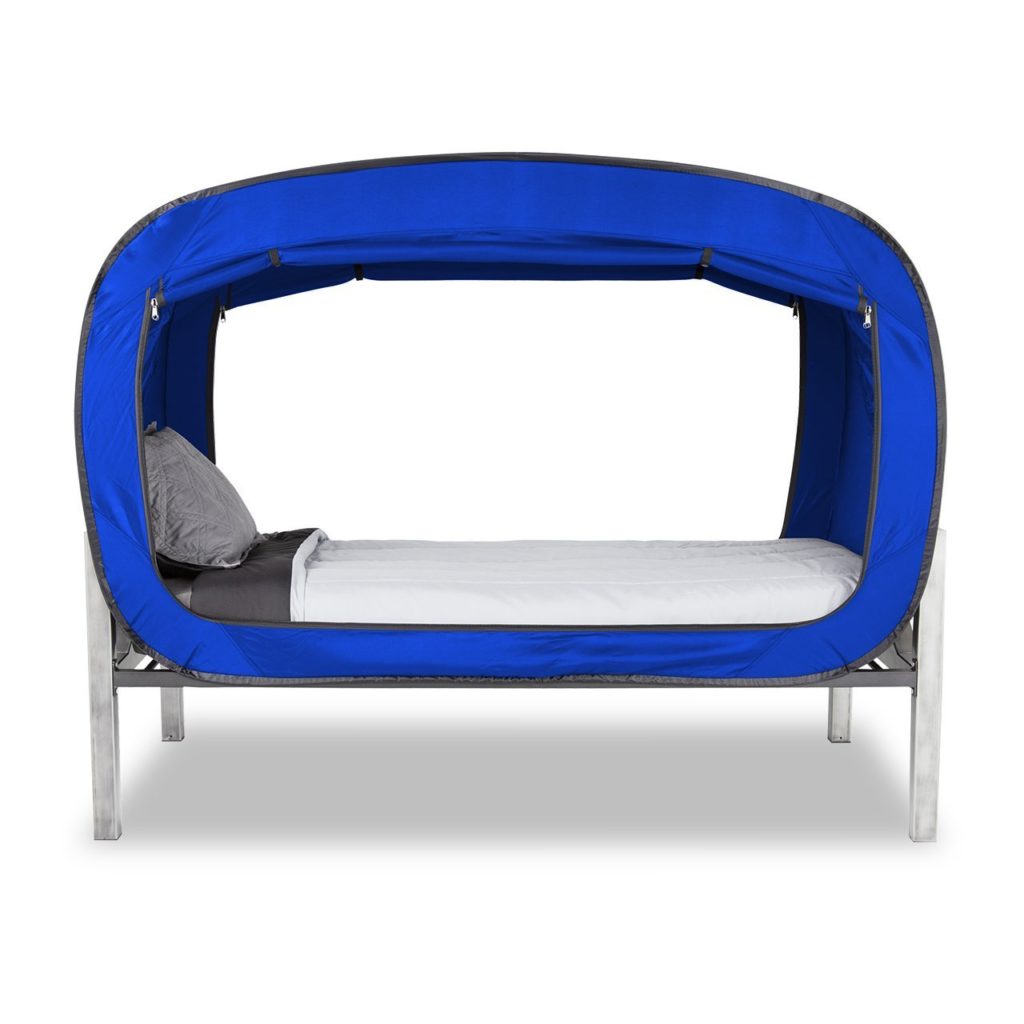
GROUP LIKE WITH LIKE
Don’t let your limited desk drawer space turn to chaos. Small spice bottles corral push pins, staples, rubber bands, alligator clips and other small supplies. Pop them on a Lazy Susan with a tall mug in the center for pens, highlighters, and scissors, you have a supply station.
MAKE CLOSETS DO DOUBLE-DUTY
Most dorm closets having nothing but an inconveniently high shelf and one hanging rod. Do double-duty by hanging a second rod (Room Essentials Adjustable Closet Rod Extender, Target), a 6-compartment vertical sweater organizer and a valet rod (ContainerStore.com) for putting together outfits. Attach your valet rod well above eye level. Don’t ask me how I know.)
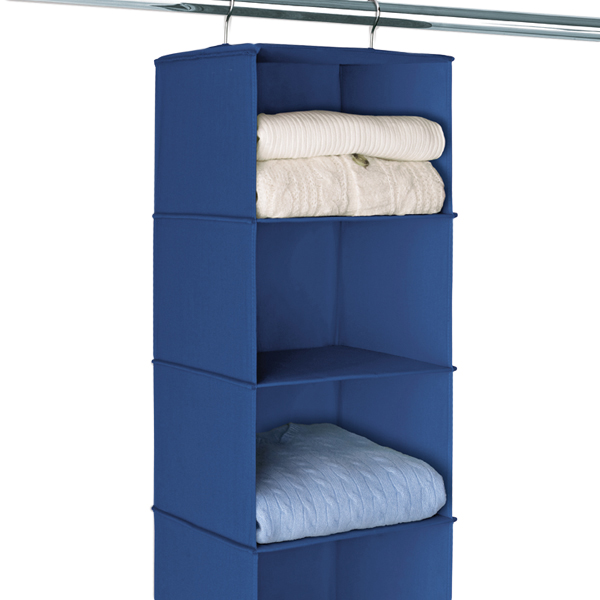
STAY TIDY & CHARGED UP
With so many electronic devices to keep track of, you and your friends will need to stay charged up. Pick a flexible power strip surge protector that can curl around the leg of a bed or desk like the Quirky Pivot Power (Amazon, $27)

or one with rotating outlets and USB ports to accommodate larger plugs and adapters, like the Power Curve (Amazon, about $35).
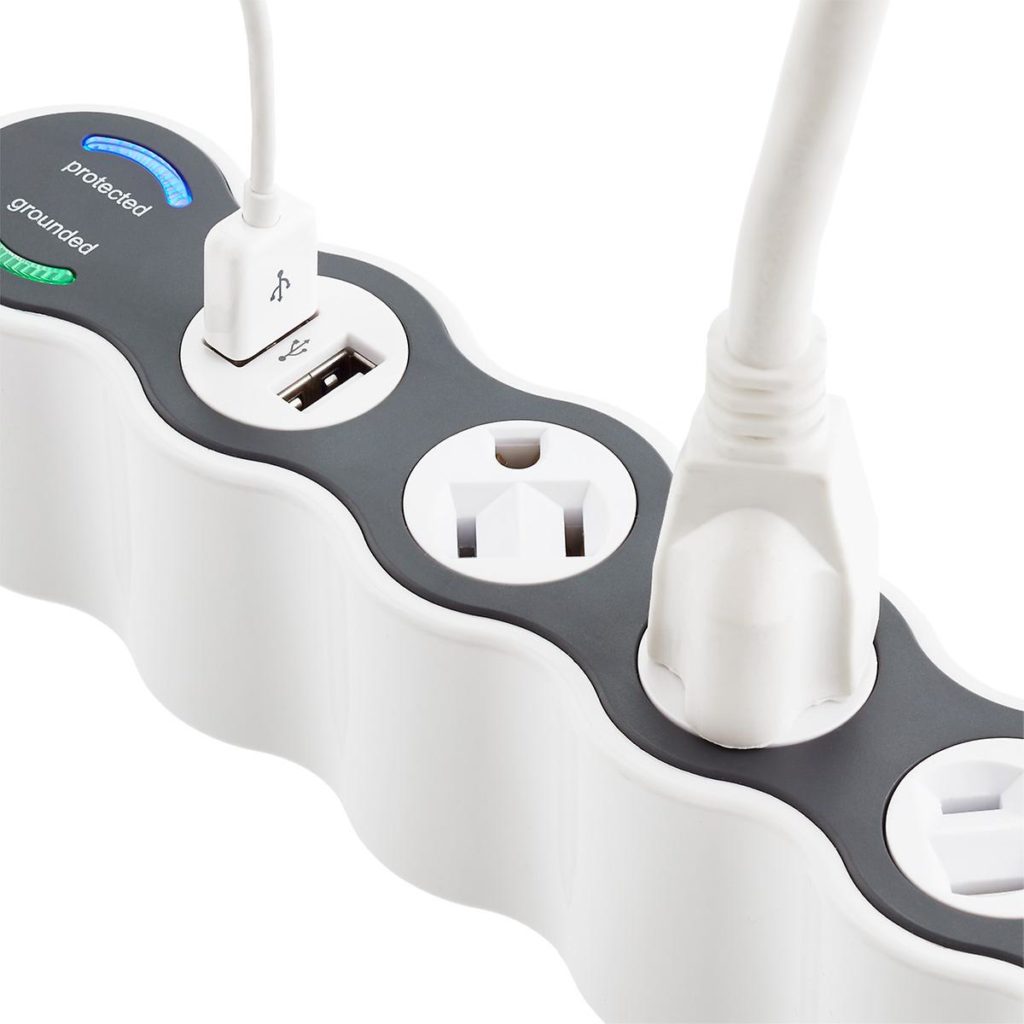
Create a work hub/charging station with a wall-mounted option like Belkin’s USB Outlet Extender with a phone cradle. (Container Store, $30)
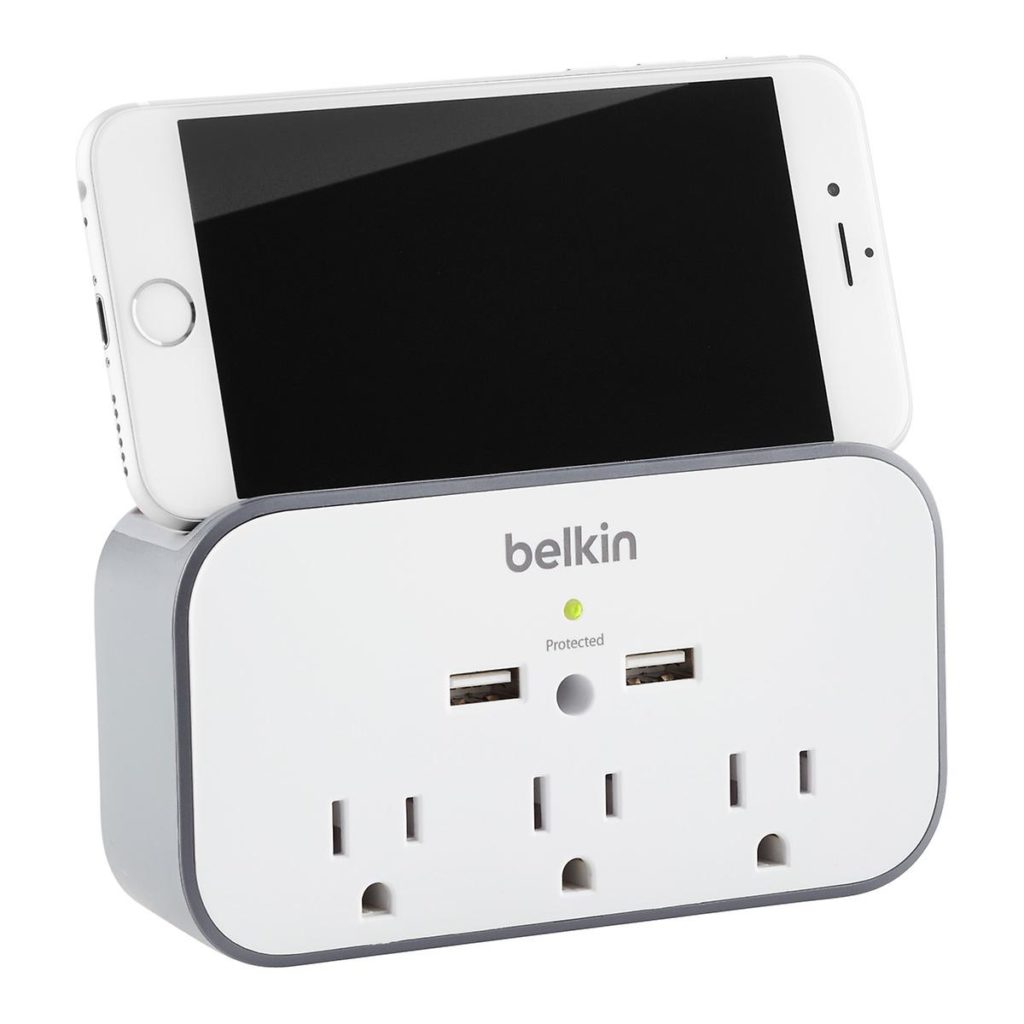
Make sure your unplugged lightning cables and cords never fall to the floor or snake behind the desk again with the MOS Magnetic Organizing System for cables. (MOSOrganizer.com or Amazon)
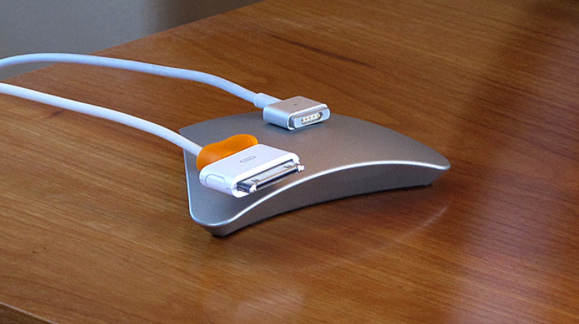
If you aren’t familiar with MOS, definitely check out this classic Paper Doll blog post for one of my favorite cord control solutions.
SHELVE INSTEAD OF PILE
Dorm rooms usually lack shelving, leaving it hard to group similar items to keep them organized. Stacked milk crates are easy to break down at year’s end, but can be wobbly, and bookshelves can be hard to put together or move and impossible to disassemble.
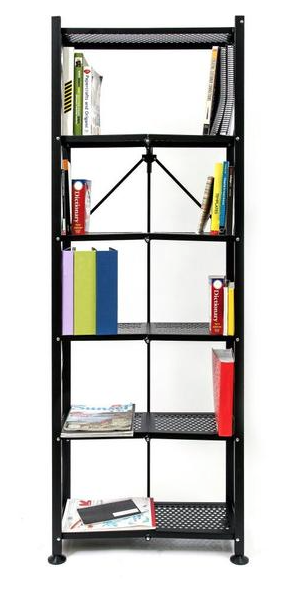
A magical option is the Origami 6-tier Deco Bookshelf, which comes flat-packed, expands accordion-style (like opening an ironing board), sets up in two minutes and collapses for easy storage during the summer. This is the bookshelf that I own, and as an apartment-dweller, I can’t think of an easier bookshelf option. (Shop directly at OrigamiRack.com, or get decorator colors of the taller, original version, as well as the stackable three-shelf “flip” options, at Container Store and via HSN.) If you don’t mind TV shopping, you can see how the Origami Racks work here.
CLASSIC DORM ESSENTIALS
Of course, most of the old standbys from my own college days are still in vogue because they are practical.
- Lamps – Dorm overhead lighting is uneven and harsh. Limit the eyestrain and brighten up the room with colorful clip-on and gooseneck desk lamps. (In 1985, I set off for college with an incredibly ugly, olive-green, wide-bar gooseneck lamp of my father’s that he may have had since he left the army in 1946. They really made things to last in those days! But your student will probably prefer a pop of color.)
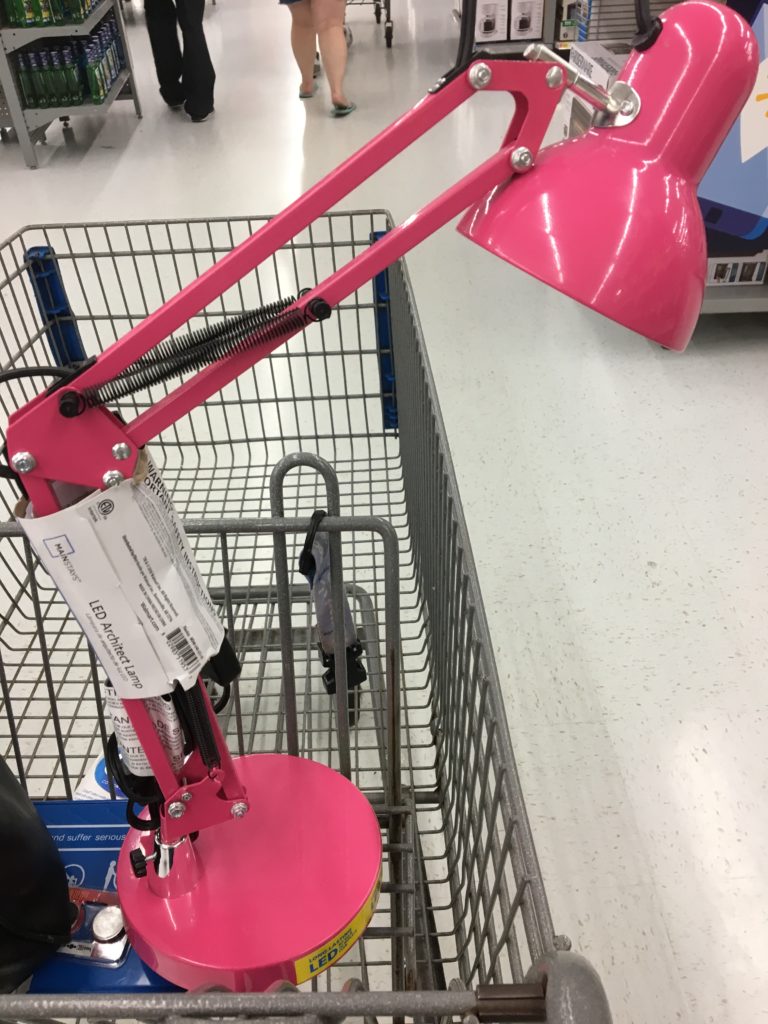
- Reading backrest pillow – you can only sit in your 1950s-era desk chair so long before you’ll need an ergonomic break. Snuggle up to one of those pillows with arms to support your back while you read, game, or hang out with friends. (BedBathBeyond.com)
- Tower fan – desktop fans have limited range, and tend to be noisy and get dusty quickly. A tower fan takes up little real estate, can be tucked in the corner when not in use, and cools a stuffy dorm room. (Honeywell QuietSet, Amazon)
- Pop-up laundry basket – When I went off to college, Paper Mommy sent me with a full-sized rectangular laundry basket. It was great for carrying folded laundry back to my room, but it took up a ridiculous amount of floor space and ended up sitting on top of all my shoes in the wardrobe. A mesh pop-up laundry basket, available in any dollar store, is inexpensive and easy to tuck out of the way.
College has changed a lot since my day, when there was one TV for 144 students, no students had their own cable or internet, you needed memo boards because their were no cell phones, and you had to traipse through the snow to use a computer with green typeface on a black screen and a dot-matrix printer that sounded like a wounded animal. That said, a little ingenuity has always been able to keep students organized and productive in the dorm, and that hasn’t changed.
Study well, and whether you’re a parent or a college student, have a great year!
Paper Doll’s Campus Tour: Organize Your College Life
Paper Doll is old enough to remember the excitement that the August back-to-school issue of Seventeen Magazine would bring. I especially loved the articles about preparing for college.
Long before I was ready to go to college, I couldn’t wait to get organized to go to college. And by the summer between graduation and going off to school, it seemed like Paper Mommy and I comparison-shopped every possible dorm room item, as if we were setting up a color-coordinated magazine spread for Dorm Room Beautiful!
Over the years, I’ve offered a lot of advice about preparing for college. Elsewhere on my site, I’ve written articles like Organizing Your College Search and Application Process and Organize Your Dorm Room. A search of the Paper Doll blog for the tag “Notes and Notebooks” examines options for the right note-taking solutions and resources, and the blog covered Textbook Rentals: How to Avoid College Textbook Clutter as early as 2009, and then in again in 2010, and looked at 11 Tips for Beating the High Cost of Textbooks in 2012.
Today’s entry offers up some of Paper Doll‘s favorite items and venues for organizing college life.
QUIRKY
Pivot Power — this flexible power strip and surge protector from Quirky comes in a few versions: junior, with three outlets, as well as six-outlet versions in traditional black, white with blue, and various colors in the POP line. This full-sized pink POP Pivot (say that three times fast!) runs about $20.
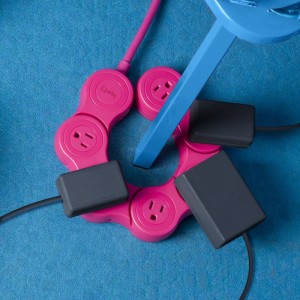 Bend the Pivot to accommodate hairpin dorm room turns, large chargers and inconveniently-placed furniture.
Bend the Pivot to accommodate hairpin dorm room turns, large chargers and inconveniently-placed furniture.
SMEAD CAMPUS.ORG
We’ve already talked about the Vertical Step Index Expanding File and the
Organized Up™ Vertical Stadium File when we looked at NAPO2014: Our Friends at Smead Are on the Up and Up!, and we’ve covered the Organized Up™ folders, which have dual tabs for easy storage in backbacks and when traditionally filed. But be sure to check out other backpack-friendly vertical school supplies in that same line. I’m particularly fond of poly folders, as they won’t rip or get wrinkled with overuse, and seem like a step up from the paper subject folders prevalent in middle and high school.
For example, there’s the Poly Backpack Folder.
 These upright folders are designed to hold one subject at a time, and the fold-over flap keeps your syllabus and handouts secure. The flap is straight-cut, so it can be tucked or untucked (like college shirts after the Freshman Fifteen take hold) and each Poly Backpack folder will hold up to 100 sheets and run about $1.29 at Amazon and elsewhere.
These upright folders are designed to hold one subject at a time, and the fold-over flap keeps your syllabus and handouts secure. The flap is straight-cut, so it can be tucked or untucked (like college shirts after the Freshman Fifteen take hold) and each Poly Backpack folder will hold up to 100 sheets and run about $1.29 at Amazon and elsewhere.
Smead’s Campus.org line also includes the similar Poly Backpack Organizer. Each of the three pockets will hold up to 50 sheets. (For those who are still fond of paper over poly, both products are available in 11-point textured paper stock, as well as poly.) You can find the organizers for about $5 each.
CAMPUS CANDY
Paper Doll perennial faves Office Candy have a whole line for fashionable college students to get their organizational groove on. Collegiate-themed Campus Candy has the same philosophy as its older sibling — if your organizing resources are appealing, you’ll be more likely to use them to keep yourself orderly.
From Kate Spade storage boxes ($52 for a set of three sturdy, patterned boxes with gold foil accents and gold foil ID labels)
to a plethora of Lily Pulitzer agendas, spiral notebooks, water bottles, desk sets and more, Campus Candy offers decorative sweets.
BATTLE OF THE BACKPACKS
I’ll admit, in my day, when dinosaurs roamed the campus, backpacks were pretty basic. One large interior pocket, one smaller, zipped exterior pocket, and if you were lucky, padded straps. As far as I can recall, bottle water (let alone mesh pockets for water bottles) wasn’t even a thing yet. Now, students have an embarrassment of stuff-schlepping riches from which to choose.
Cocoon Innovations, makers of the Grid-It! (in all of its various incarnations), has always been a Paper Doll all-star. I think college-bound students should be considering a variety of Grid-It! resources, from the standard Grid-It! Organizers (Medium shown here, 10 1/2″ x 7 1/2″, $18, available in red, blue and black)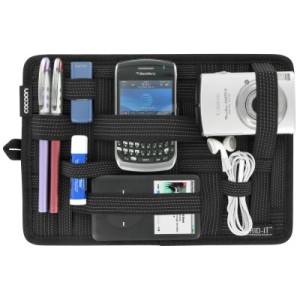
to the Grid-It! Wraps for tablets (in black, grey and red) for $30.
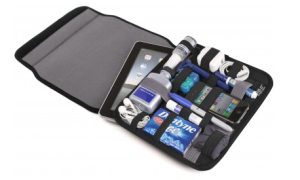 But the backpacks have taken the game up a notch — and while the Central Park Professional Backpack (designed to hold a 17″ laptop) is definitely practical and stylish, the Cocoon Slim Backpack (able to hold up to a 15″ MacBook Pro) has everything a college student might need to make it from breakfast to bedtime without a moment’s clutter kerfuffle.
But the backpacks have taken the game up a notch — and while the Central Park Professional Backpack (designed to hold a 17″ laptop) is definitely practical and stylish, the Cocoon Slim Backpack (able to hold up to a 15″ MacBook Pro) has everything a college student might need to make it from breakfast to bedtime without a moment’s clutter kerfuffle.
The slim has a padded compartment for a laptop as well as a separate iPad compartment, and a built-in 16″ x 10 1/2″ GRID-IT! front pocket. There’s an interior document section, and an exterior zippered compartment for more storage. The whole interior is lined in faux suede to buffer the high-tech gadgets, and the exterior features water-resistant ballistic nylon, waterproof zippers, and gun-metal hardware. Ridiculously organized and durable, but also sleek, when fully packed, it’s still only 3 1/2″ deep:
And it’s only $79! I’d always thought that if I were going back to college, I couldn’t find anything more perfect for me than my Züca bag combined with a Grid-It for all my chargers and gadgets, but the Slim is mighty tempting.
Of course, if you (or your college-bound student) want a similarly lean alternative but with a little more minimalist cachet, the Evernote-branded, French-designed Côte & Ciel Flat Backpack may fit the bill. The high performance, dark grey EcoYarn exterior is tough but attractive in that oh-so-Old-World, “Oh, this old thing?” manner, and the three interior pouches will accommodate a 13″ or 15″ laptop, a tablet and stacks of papers, all in under 4″ of depth. The price, however, is a not-so-slender $180!
in that oh-so-Old-World, “Oh, this old thing?” manner, and the three interior pouches will accommodate a 13″ or 15″ laptop, a tablet and stacks of papers, all in under 4″ of depth. The price, however, is a not-so-slender $180!
RISE UP FOR SWEET DREAMS AND LATE NIGHT STUDYING
Most college students can adequately outfit themselves for campus survival without ever leaving their nearest Big Box store plaza. For example, Power Bed Risers, like these from Bed, Bath and Beyond, serve two purposes: superior storage and increased available outlets.
A set for four, for $30, raises a dorm room bed 7″ from the floor, allowing for more ample storage of lidded tubs (for extra supplies and off-season clothing) without cluttering the room. Additionally, one riser in each set includes twin 110-volt, 15-amp grounded power outlets and twin USB 5-volt DC outlets with a charging light, so you can make sure everything from phones to Fitbits, iPads to (probably still contraband) toaster ovens will be ready when the need arises.
BACK TO BASICS
Finally, there’s something to be said for the basics. College students have put milk crates to use as bookshelves, open armoires for clothing, fridge-top food storage, filing boxes, chairs, dining tables and more for about half a century.
Nowadays, they’re designed primarily for files, not wholesome dairy products, and have hanging file rails running along the interior in both directions to corral letter- or legal-sized files.
For between $4 and $6 each at Walmart, Target or Staples, you can grab two or three plastic milk crates in mix-and-match colors, pack and stack them with minimal fuss and cost, and maximize the organization in your postage stamp-sized castle. It’s academic.
And by the way, Seventeen Magazine is still offering advice on what to bring to college.

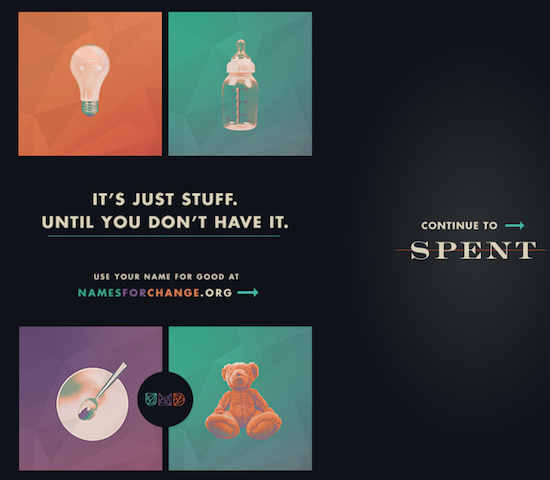


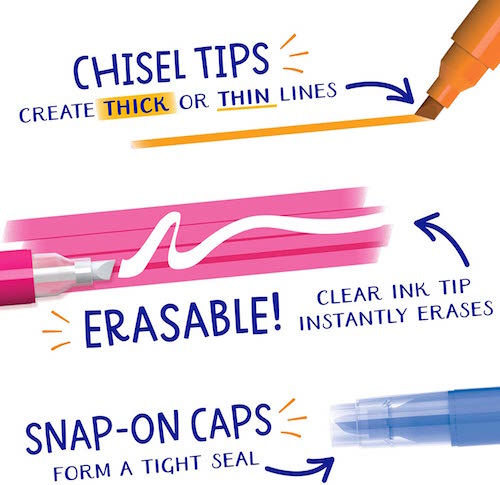
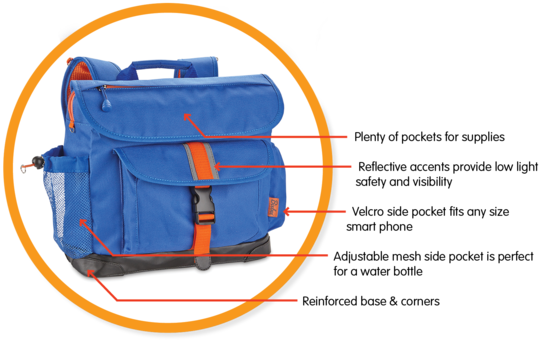
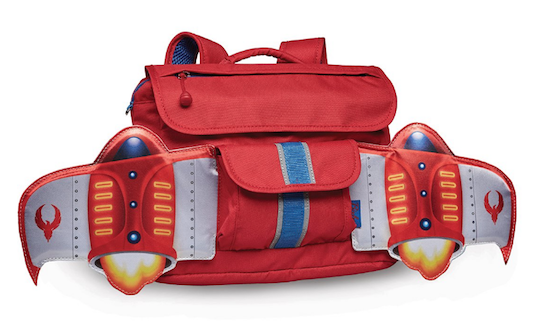
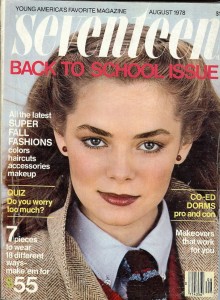
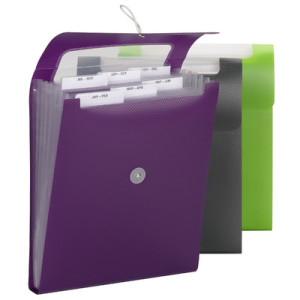
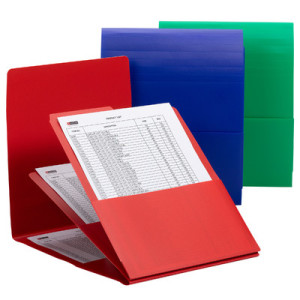
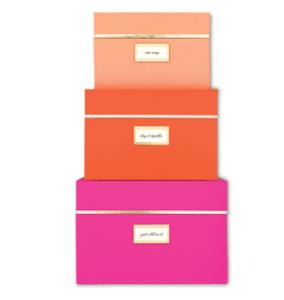
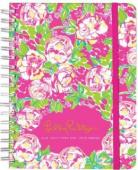
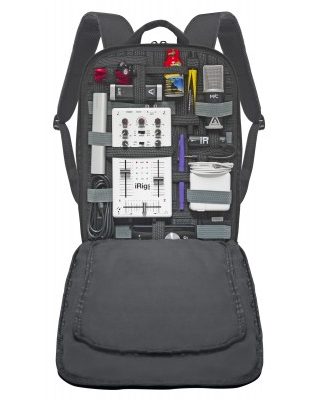
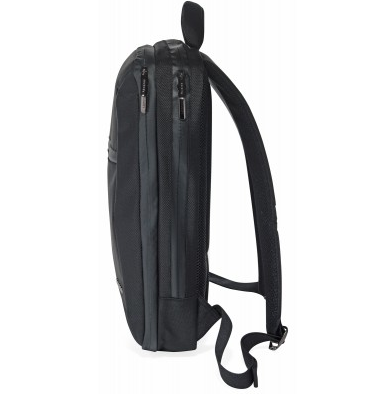
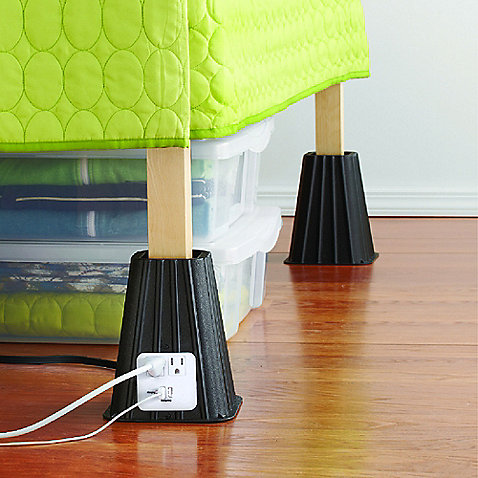
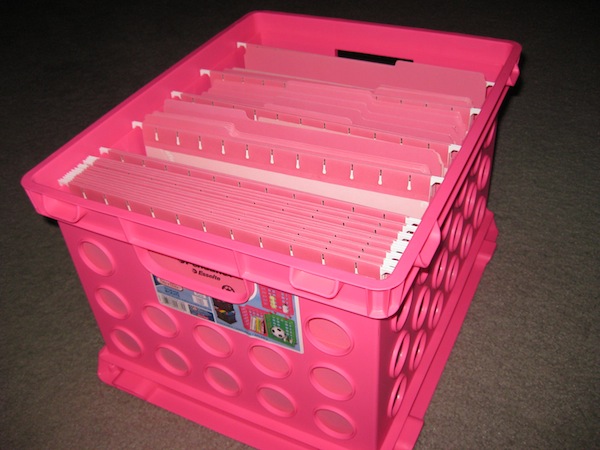



Follow Me